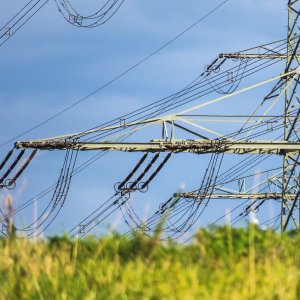Chinses Giant Breaks Ground In Mexico's Energy Sector
Over the last decade, Sinohydro Corporation has become one of the leading construction contractors worldwide, with a presence in more than 60 countries. Sinohydro, a subsidiary of PowerChina Group, is responsible for more than 65% of the hydropower projects in China, including the biggest hydroelectric power plant, Three Gorges, which has a capacity of more than 22,000MW. Sinohydro’s global strategy has consisted of developing a complete business line of activities with a network of more than 70 offices in Latin America, Asia, Africa, the Pacific, and Eastern Europe. Thanks to the reputation the construction company acquired in Three Gorges, Sinohydro has been able to establish operations abroad, targeting hydropower projects such as the Coca Codo Sinclair hydroelectric project in Ecuador. With an installed capacity of 1,500MW, this will be the largest hydropower plant in Ecuador upon its completion in 2016.
Mexico has always been of interest to the company because the country’s need for large infrastructure projects provides valuable opportunities in energy and gas, water, transportation, railways, and other fields. Sinohydro recently landed a breakthrough opportunity to consolidate its reputation in Mexico by winning the bid to build the Chicoasén II hydroelectric plant. Victory does not come without blood, sweat, and tears, however. “Securing projects in Mexico is not easy for newcomers, especially a Chinese company like ours. Chicoasén II was not our first tender attempt in Mexico,” says Gilbert Salvi, Vice President Americas of Sinohydro, who admits his company has had to familiarize itself with the country’s fundamentals through trial and error.
When entering a new country, Sinohydro strategically selects projects where it can bring added value in terms of engineering, technical resources, management, and construction, according to Salvi. In this sense, cooperation with local partners was crucial to entering the Mexican market. Indeed, the Chinese giant won the tender as part of a consortium composed of Omega Construcciones, DYCUSA, and CAABSA Infraestructura. Chicoasén II, which was tendered as a financed public work, will have a capacity of 240MW and will supply the country’s southeastern region.
Sinohydro first carried out a thorough analysis of the works required, making sure it would be able to provide the adequate methodology and the most advance technology according to the technical specifications of this project. For instance, one of the requisites for the project was the use of bulb turbines. “Upon completion of studies, we were convinced that we would be able to carry out the project within the established time frame of four years and within
CFE’s budget,” tells Salvi. Once the technical, contractual, and financial risks were considered, the consortium decided to place an offer with a competitive price.
An outstanding factor is the fact that the consortium submitted a proposal for US$390 million, almost US$20 million below CFE’s budget for the project. “All the groups that prequalified for the tender were aware that any proposal above CFE’s budget price would be automatically discarded. Therefore, we had to make a professional and appropriate cost analysis of the project, with a thorough understanding of CFE’s technical specifications and contractual requirements,” Salvi explains. As part of the bidding proposal for a financed public work contract, the consortium had to come up with a way to finance up to 100% of the project. “Financing such an infrastructure project required financial partners, mainly international commercial banks and multilaterals, willing to share the risk based on a project finance scheme, where the financing is guaranteed by the CFE contract’s structure, the consortium’s profile, and the project’s risk,” Salvi recounts.
The financing structure was developed with a pool of banks, while the members of the consortium provided equity to cover the initial costs of the development until the completion of the financial contract. Fortunately, Sinohydro has the ability to participate in projects not only as a contractor, but also as an investor, which helped in securing the Chicoasén II contract. Sinohydro wants to develop a close relationship with CFE so that both state- owned companies can work on a sustainable energy policy and implement the corresponding projects together. Salvi says the quality of the projects and the transparency in the procurement processes influences international companies’ interest in Mexico. In this sense, he believes CFE could benefit from updating and adapting the financing conditions laid out in the Public Works Contracts, using international standards to mitigate the risk sharing ratio between CFE and the contractor.
Salvi says Sinohydro’s business strategy for Mexico is focusing on major infrastructure projects where the company can work as a single contractor or as part of a team. Salvi believes the latter option will increase his company’s chances of being awarded a project, as the approach proved successful in Chicoasén II. “Our Mexican partners will bring in their own resources in terms of plants, equipment, manpower, and management. The idea is to contribute a transfer of knowledge that will benefit our partners, as well as the subcontractors and local communities.” In fact, he expects the company to repeat the strategy for the next tender.



















